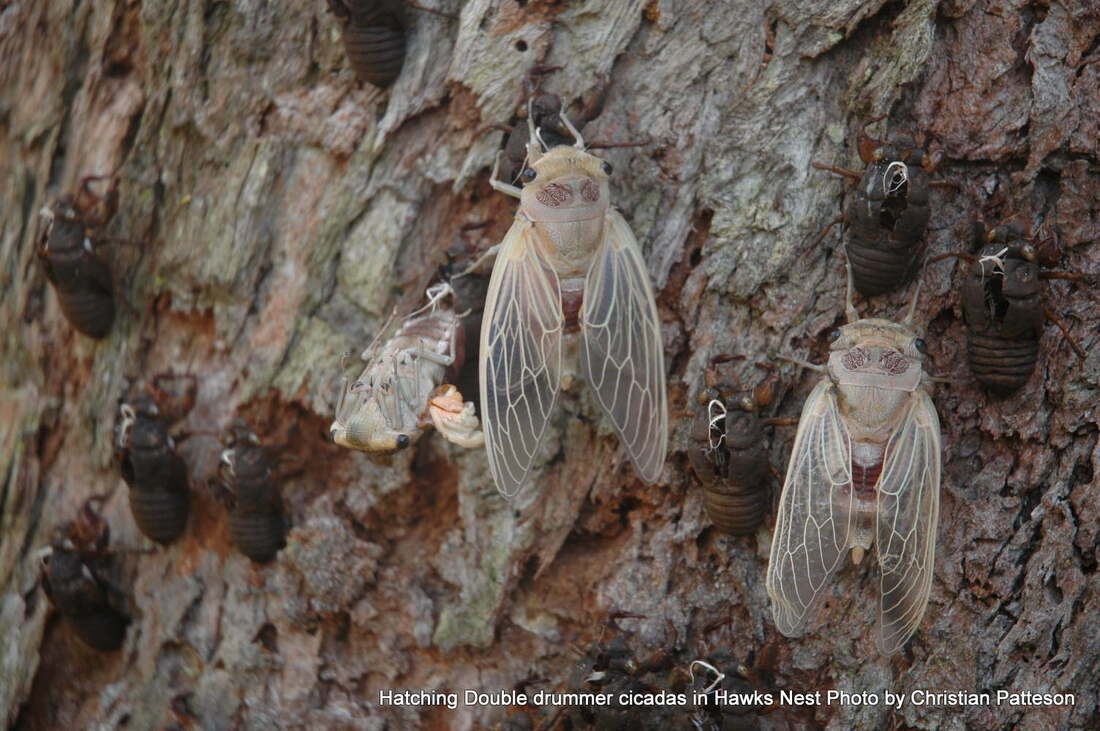It is almost that time of year again. Whether you like it or not, what would late spring and Christmas in Australia be without heat and shrilling cicadas.
Some years the mass emergence in Hawks Nest is a spectacle.
I am not anticipating one this year as my records indicate a local seven-year lifestyle. There was a big emergence in late 2010 and again in 2017.
Add seven years to that and we aren't quite there, but let’s see what happens, there may be a few early ones.
|
There are many species of cicadas. The noise is the male's mating call made by vibrating drum-like structures on his abdomen. To the untrained ear, most cicadas sound the same. But after a while you can detect each species has its own unique call. In the Lower Myall, the most reliable one from year to year is the White Drummer. Its sound is a rather nondescript buzz, like a cricket. t is olive green and hatches close to the beach or river usually taking up residence near the water. Hawks Nest's best known is the large orange-brown loud and high-pitched Double Drummer. Some years there are hardly any, other years there are millions. Most cicadas emerge from the ground under the cover of darkness. Not so the Double Drummer who "hatches" during the day. It is an amazing sight. Starting November, the soon-to-be-adult appears fully shelled mid-morning and climbs a short way up anything nearby. It finds a stable location and the outer shell then splits. To get out, it has to arch backwards. Then at the right moment has to leap upright to prevent a deadly ground fall. This process takes about an hour. The young adult, initially silky white in colour is soft and vulnerable to opportunistic predators like birds and ants. It has to wait nervously for yet another hour or so until it has hardened enough to be able to climb or fly to safety. Up on the hills and elsewhere in this area, different soil and forests support different species. I haven't worked out the patterns so I don't know what this season will bring. There are Red-eyes, Cherry Noses, Floury Bakers and Greengrocers cicadas. Their physical description matches their name. But the loudest is the brown coloured Razor Grinder. Its description matches its sound -well sort of. It is not as large as some of the others, but its drone can be borderline painful. Especially when in groups. They and other species gather in groups as a survival mechanism to confuse and deter birds. In this setting they are also more likely to eject "Cicada pee" if disturbed. Otherwise known as cicada rain it is simply excess fluid as they have to drink lots of sap and water from trees to survive. Most adult cicada species rarely live longer than 6 weeks. After mating, the female makes small slits in twigs to deposit eggs. In a few weeks these hatch into tiny nymphs and fall to the ground burying themselves. Depending on the species and conditions they stay underground feeding on tree root sap for 3 to 10 years. It is believed though that most of the large one’s average six to seven years in the earth. Personally, I like cicadas and their song which reminds me of summer and the Australian bush. I cannot imagine Christmas time without them. By Christian Patteson 2021 |




